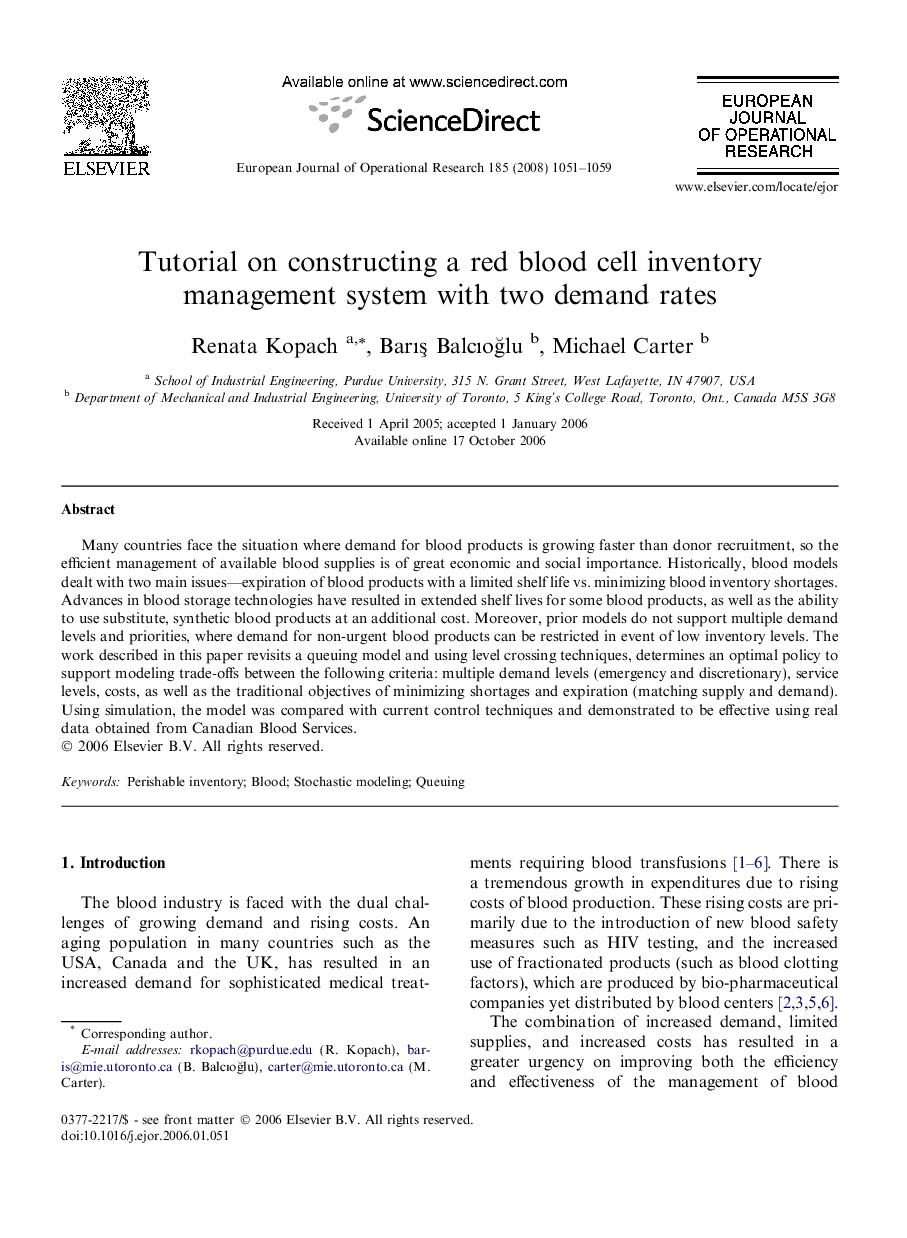| Article ID | Journal | Published Year | Pages | File Type |
|---|---|---|---|---|
| 481631 | European Journal of Operational Research | 2008 | 9 Pages |
Many countries face the situation where demand for blood products is growing faster than donor recruitment, so the efficient management of available blood supplies is of great economic and social importance. Historically, blood models dealt with two main issues—expiration of blood products with a limited shelf life vs. minimizing blood inventory shortages. Advances in blood storage technologies have resulted in extended shelf lives for some blood products, as well as the ability to use substitute, synthetic blood products at an additional cost. Moreover, prior models do not support multiple demand levels and priorities, where demand for non-urgent blood products can be restricted in event of low inventory levels. The work described in this paper revisits a queuing model and using level crossing techniques, determines an optimal policy to support modeling trade-offs between the following criteria: multiple demand levels (emergency and discretionary), service levels, costs, as well as the traditional objectives of minimizing shortages and expiration (matching supply and demand). Using simulation, the model was compared with current control techniques and demonstrated to be effective using real data obtained from Canadian Blood Services.
